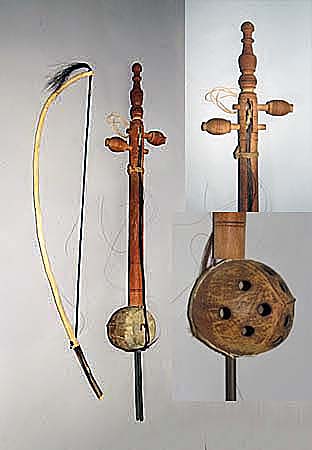
Owner: HWMC
Catalogue #: 2AF-CHLT-21
Provenance: The Collection of Carol Warden, Dale Music Company, Bethesday, MD.
Lutes
Egypt 'Rabāba' (C)
Egypt
Egyptian (Arabic)
Wood, hair, coconut, fiber, goat skin
Early -20th century
Length: 33 in, Diameter: 4 in, Depth: 3.5 in
Chordophones – Lutes
The rababa (rebaba) is an Egyptian two-string spike-fiddle sometimes referred to as the ‘fiddle of the Nile.’ It is used to accompany singing. There are numerous spike and stick fiddles in the Arabic world, and the rababa is probably one of the oldest string instruments, dating at least as far back as the 8th century, when it was found in Arabia and Persia. Very likely, it is the ancestor of the European violin. Islamic trading routes helped to spread it over much of North Africa, the Middle and Far East from the 10th century onward.
This version of the rababa has a coconut resonator with several drilled holes, a goat skin top, two horse or camel hair strings, and two large pegs that insert from either side of the front open peg head. There is a large metal spike at the end of the resonator to rest the instrument on the ground while played with a curved bow. The instrument is turned from side to side, rather than moving the bow to play each string.
